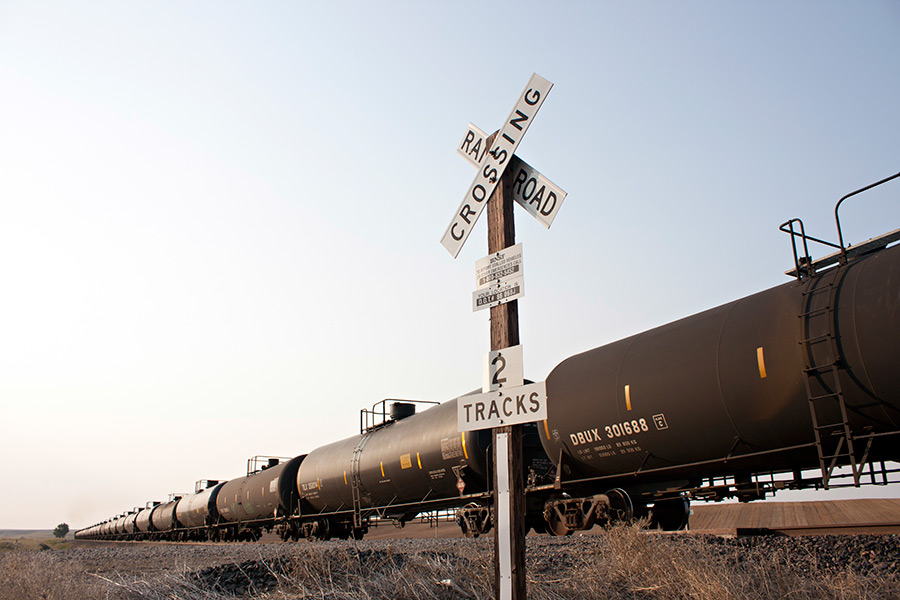An explosive oil train wreck in Oregon’s scenic Columbia River Gorge earlier this month served as a stark reminder of the hazards of moving crude by rail through environmentally sensitive areas in the Pacific Northwest.
The June 3 derailment occurred on the Union Pacific Railroad near Mosier, Oregon, about 70 miles east of Portland, and early indicators suggest it was caused by a broken track component.
The number of oil trains from North Dakota’s Bakken oil fields has rapidly increased in recent years and a series of fiery wrecks are raising concerns from environmental groups about accidents in places like the Columbia River Gorge or Montana’s own Glacier National Park. In 2014 and 2015, BNSF Railway reported moving 10 to 18 oil trains a week through Northwest Montana on tracks that border Glacier Park.
In an interview with the Beacon, BNSF officials said the company had a “rigorous” track inspection program to ensure the rails are safe for all trains.
The Federal Railroad Administration requires railroads to inspect their track for defects at least once a week and twice a week if passenger trains operate on the track. The FRA also conducts its own random inspections in coordination with state agencies and in 2015 looked at more than 118,000 miles of the country’s 140,000 miles of track. The FRA utilizes an Automated Track Inspection Geometry Car that records 19 measurements for every foot of rail as it goes down the track.
BNSF spokesperson Ross Lane said the railroad inspects its track along Glacier National Park at least four times a week, “above and beyond what is required by the Federal Railroad Administration.” Lane also said that the railroad uses its own advanced track inspection car on the route every 90 days that uses specialized sensors to ensure there are no defects within the track.
“BNSF is committed to moving the products our communities depend on every day, safely, and without incident,” Lane said.
Lane also said the company has train defect detectors across the system and has installed additional ones along critical waterways, including the Middle Fork of the Flathead River. A train defect detector triggers an alarm if a train has derailed at a specific location.
Lane notes that BNSF is required by federal law to move all regulated products, including crude oil. It is one of three major railroads in the state, including Montana Rail Link and Union Pacific. BNSF is the only one that moves large quantities of Bakke crude on a regular basis (according to data from the state of Montana, MRL has only moved one oil train through the state in the month of June).
The number of oil trains on America’s railroads increased drastically with the Bakken boom. However, a series of explosive wrecks, including one in Quebec that killed 47 people, raised concerns that the Bakken crude was more volatile than regular crude. Since 2013, there have been nearly a dozen oil train wrecks that have resulted in fires and explosions. Because of that, the U.S. Department of Transportation has implanted new rules governing the movement of crude but the incident in Oregon serves as a reminder that the potential for accidents remains.
